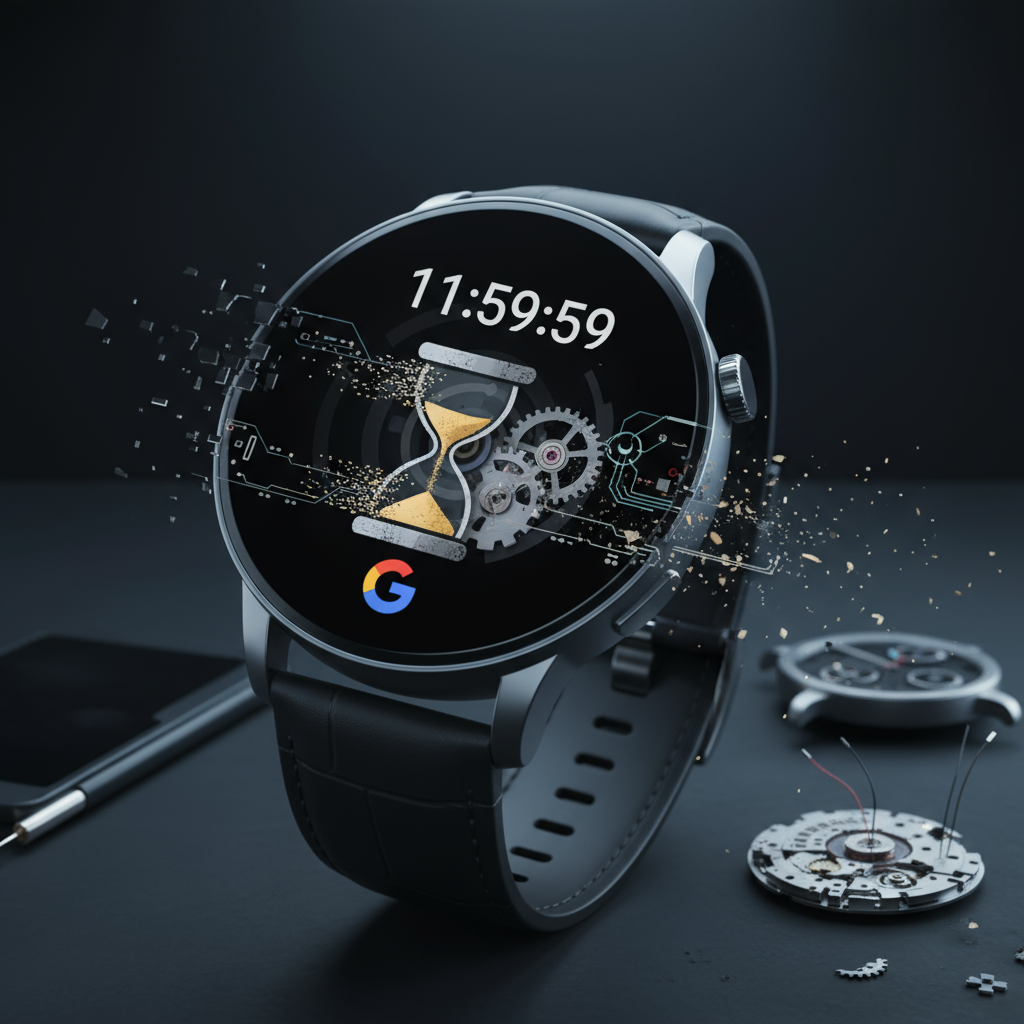The Clock is Ticking: Google Ends Third-Party Support for Wear OS Clock App

In a move that’s been brewing for a while, Google has finally pulled the plug on third-party support for its Wear OS Clock app. This doesn’t mean your smartwatch is suddenly useless, but it does signal a shift in Google’s strategy for its wearable operating system. So, what does this really mean for Wear OS users, and why is Google making this change?
Let’s dive into the details and explore the implications of this significant decision. It’s a change that highlights how Wear OS is maturing and evolving away from a one-size-fits-all approach.
Why the Change? The Rise of Bespoke Wear OS Experiences

The core reason behind this decision boils down to the increasing sophistication of Wear OS devices and the manufacturers who create them. Initially, Google needed to provide a comprehensive suite of apps, including the Clock app, to ensure a consistent and functional experience across all Wear OS devices. However, as manufacturers like Samsung, Mobvoi, and others have invested heavily in their own custom features and apps, the need for Google to provide everything has diminished significantly.
Think about it: Samsung’s Galaxy Watches are packed with Samsung-specific features and watch faces. Mobvoi’s TicWatch series integrates its own health and fitness tracking capabilities. These manufacturers want to differentiate themselves, and that often means developing their own, superior versions of core apps like the Clock.
By stepping back from third-party support for the Clock app, Google is essentially giving manufacturers more freedom to innovate and deliver tailored experiences that cater to their specific target audiences. This allows for more unique and compelling devices in the long run.
The Diminishing Need for Google’s “One-Size-Fits-All” Approach
The early days of Wear OS were marked by a fairly uniform experience across different devices. This was partly due to the limited capabilities of the hardware and the software itself. Google had to fill in the gaps and provide essential functionality, including the Clock app, to ensure a baseline level of usability.
But times have changed. Modern Wear OS smartwatches boast powerful processors, vibrant displays, and a wide array of sensors. Manufacturers are now capable of building sophisticated apps and features that rival or even surpass Google’s own offerings. The need for Google to enforce a standardized experience has decreased as manufacturers have become more capable of creating custom experiences.
Impact on Users: What You Need to Know
So, how does this change affect you, the Wear OS user? The most immediate impact is that you may no longer be able to use Google’s official Clock app on your device if your manufacturer has its own built-in alternative. However, this isn’t necessarily a bad thing.
In many cases, manufacturer-provided Clock apps offer a richer and more integrated experience with the device’s other features. For example, Samsung’s Clock app on Galaxy Watches seamlessly integrates with the Bixby assistant and provides advanced sleep tracking features. Mobvoi’s TicWatch devices offer clock faces that directly display health and fitness data collected by their TicHealth platform.
The key takeaway here is that you might be losing access to Google’s specific Clock app, but you’re likely gaining access to a more tailored and feature-rich alternative provided by your device’s manufacturer. Consider this an opportunity to explore what your device can truly do.
Potential Drawbacks: Fragmentation and Consistency
Of course, there are potential downsides to this shift. One concern is increased fragmentation within the Wear OS ecosystem. With each manufacturer developing its own Clock app and other core functionalities, the user experience might become less consistent across different Wear OS devices.
Imagine switching from a Samsung Galaxy Watch to a Mobvoi TicWatch. You’d have to re-learn how to set alarms, use the timer, and access other basic clock functions. This lack of consistency could be frustrating for some users, especially those who frequently switch between devices.
Another potential issue is the quality of manufacturer-provided apps. While some manufacturers excel at software development, others may struggle to deliver a polished and bug-free experience. This could lead to inconsistencies in performance and reliability across different Wear OS devices.
The Future of Wear OS: Collaboration and Customization
Ultimately, Google’s decision to drop third-party support for the Clock app reflects a broader trend towards collaboration and customization within the Wear OS ecosystem. Google is shifting its focus from providing a complete, one-size-fits-all solution to empowering manufacturers to create unique and differentiated devices.
This means we can expect to see even more innovative features and functionalities on Wear OS smartwatches in the future. Manufacturers will have greater freedom to experiment and push the boundaries of what’s possible, leading to more compelling and user-friendly devices.
While there may be some growing pains along the way, this shift towards collaboration and customization is ultimately a positive step for Wear OS. It allows for greater diversity and innovation, which will ultimately benefit users by providing them with a wider range of choices and a more personalized experience.
A New Era for Wearables
The sunsetting of Google’s third-party support for the Wear OS Clock app marks a significant turning point. It signals a move away from a unified, Google-centric experience towards a more fragmented but potentially richer ecosystem driven by manufacturer innovation. Whether this shift ultimately strengthens or weakens Wear OS remains to be seen, but one thing is certain: the world of wearables is constantly evolving, and this is just the latest chapter in its ongoing story. Keep an eye on your favorite manufacturers and the new, unique features they will roll out in the future!

